
Hojōjutsu: The Origins of the Art Tying
In Japan, due to the rarity and high price of iron, it was necessary to use ropes to arrest and immobilize possible criminals. Thus, between 1603 and 1868, more than 150 schools of hojōjutsu (the art of tying a prisoner of war) were created. People of different social classes and genders were tied up using specific methods. In addition, as each region had its own jurisdiction, the ways of practicing hojōjutsu (Fig. 01) took on different styles.
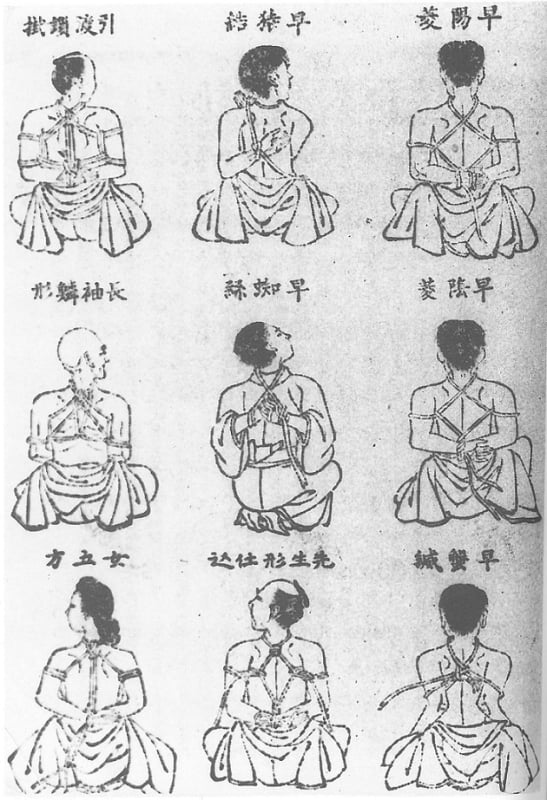
Fig.1.
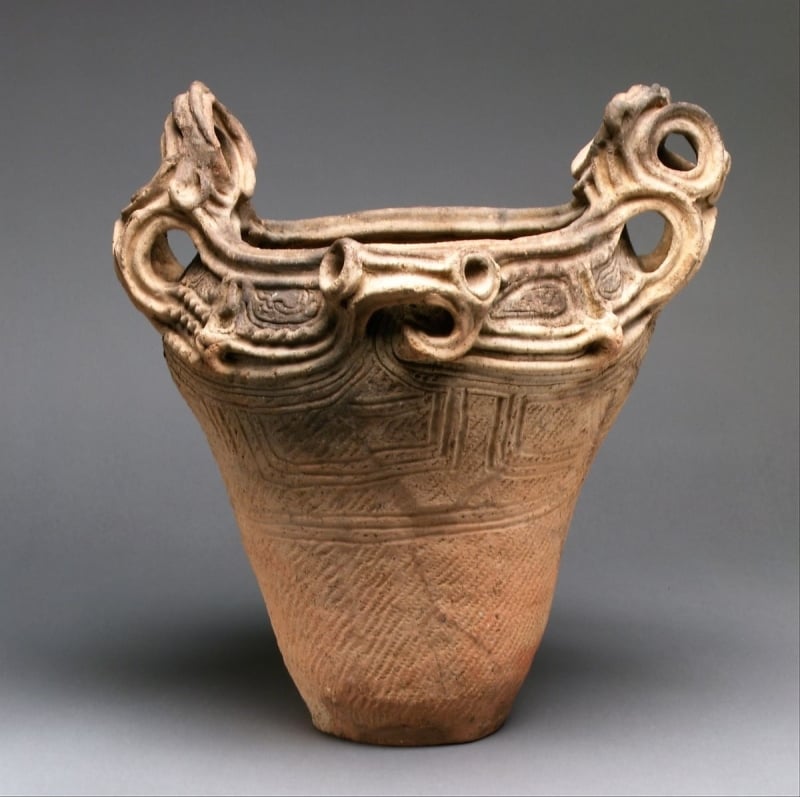
Fig.2.
Subjugation
According to Christian Russo, “Hojōjutsu, in origin, had nothing to do with pleasure. The tying techniques aimed to aid in the capture, subjugation, unharmed transportation and captivity; sometimes used for torture and subsequent interrogation or the execution of a prisoner of war or a criminal” (RUSSO, 2016, p. 28). It is also important to remember that the use of ropes in Japanese culture dates back to the Jomon period (10,000 to 300 BC) when they served as decals for the decorative tracings of vases (Fig. 02) and that it persists to the present day, for example, in the shimenawa, Shinto ritual to purify, to attract deities and to demarcate sacred territories, by tying the trunk of a sacred tree with a straw rope.
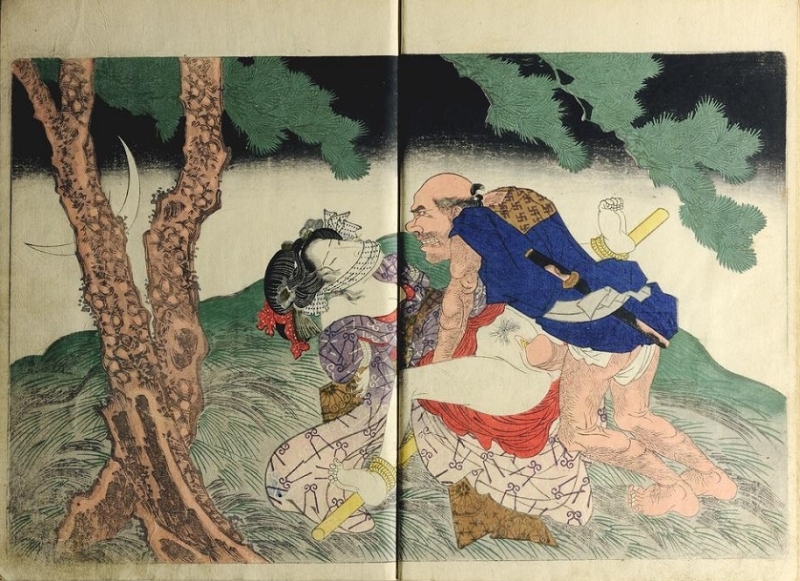
Fig.3. Horrifying rape in a forest (c.1829) from the book series Spring, Summer, Autumn and Winter: Prospects for the Four Seasons by Utagawa Kunisada
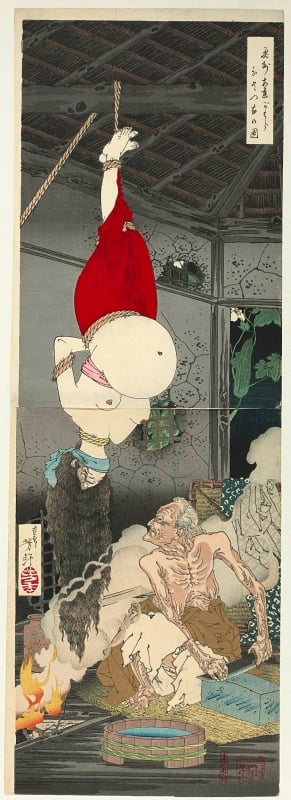
Fig.4. The Picture of the Lonely House on Adachi Moor (Oshû Adachigahara hitotsuya no zu) published in 1885. Designed by Tsukioka Yoshitoshi
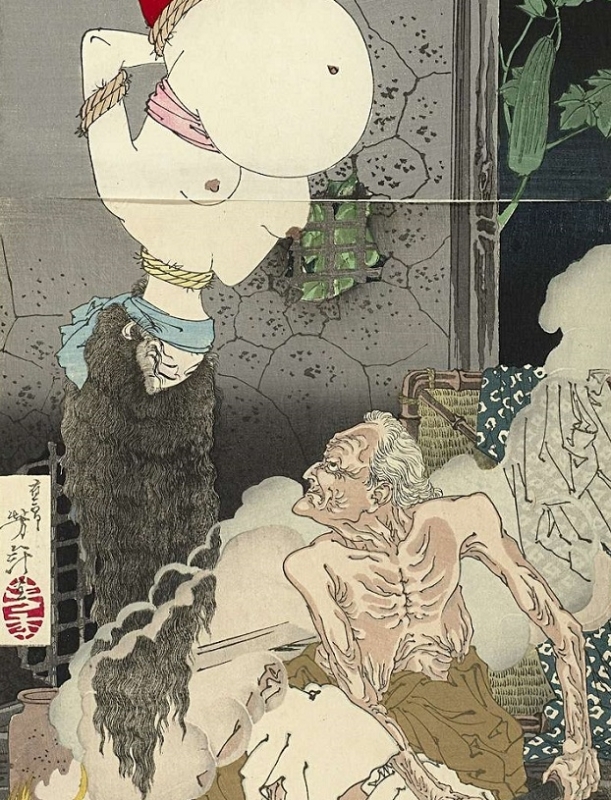
Fig.4a.
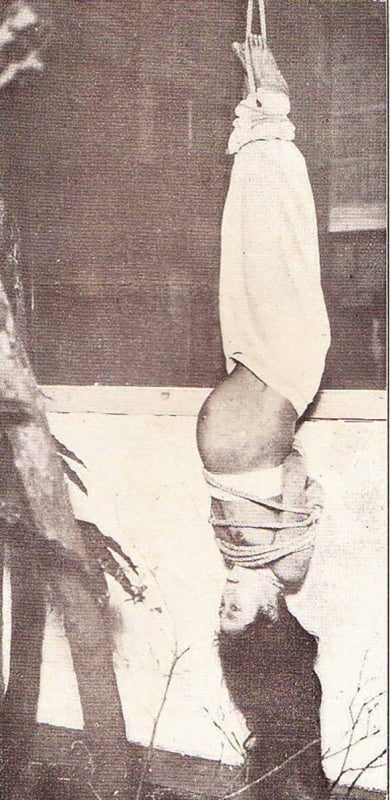
Fig.5. Photo of Inverted Suspension of a Beautiful Woman in Her Last Month of Pregnancy by Ito Seiu
Inverted Suspension
In engravings from the Edo period, the presence of the rope stands out in different contexts, which involve punishment and rape, as in Bound Woman. A hairy and barbarous bandit forces himself on a woman somewhere in a deep forest (Fig. 03), by Utagawa Kunisada, and even the supernatural, as we can see in famous Tsukioka Yoshitoshi’s engraving The Lonely House on Adachi Moor (Fig. 04), influential work Photo of Inverted Suspension of a Beautiful Woman in Her Last Month of Pregnancy by Ito Seiu (Fig. 05). Another cultural expression from the Edo period, in which there are connections between bound bodies and sensuality can be found in the Kabuki theater, where the staging of the capture of heroes and heroines was carried out through the techniques of Hojōjutsu, which generated, in the audience, a curiosity that was both sexual and morbid.

Fig.6.
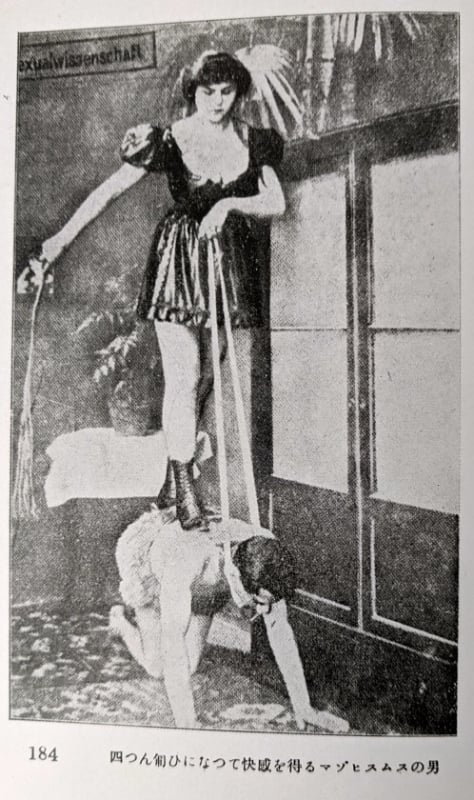
Fig.7.
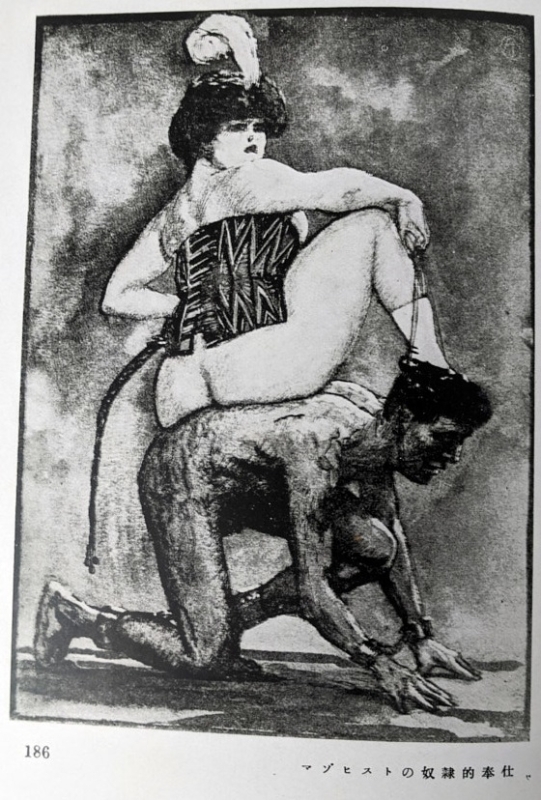
Fig.8.

Fig.9.
Between Kinbaku and Shibari
The word Kinbaku (緊縛), in Japanese, means “bind tightly”. Today, kinbaku is considered a Japanese style of bondage or BDSM that involves tying a person with several pieces of thin rope, asanawa (麻縄), usually made of jute, hemp, or linen, the visual result of which is complex geometric patterns. Another word linked to the art of binding bodies is shibari (縛り), meaning “to bind’ or “to tie”. In the West, the words kinbaku and shibari (Fig. 06) are treated almost synonymously, although some practitioners try to distinguish the terms by saying that shibari refers to the purely artistic and aesthetic rope while kinbaku is linked to artistic practice, in which sex is connected to the process of tying somebody. There is a series of controversies involving both words, with claims that shibari should be applied to the practices of binding bodies performed by Westerners and others that they should not be used in the Western world at the risk of trivializing them as mere expressions of the bondage. Anyway, there is no consensus on the use of shibari and kinbaku, as Ito Seiu came to employ the term shibari in the 1950s, with no sign of it being “Western Japaneseism”.
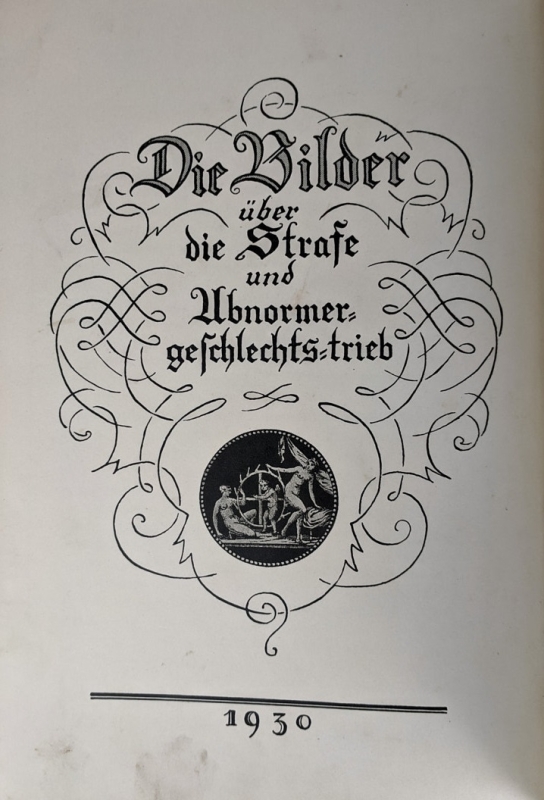
Fig.10.
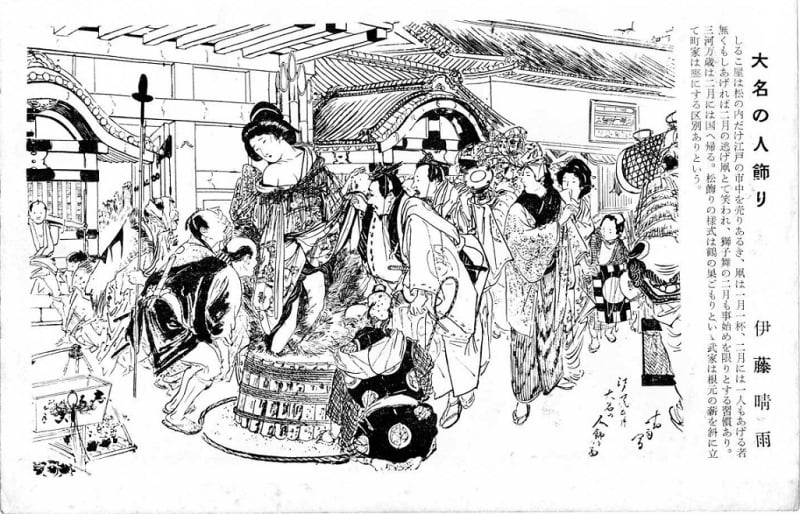
Fig.11.
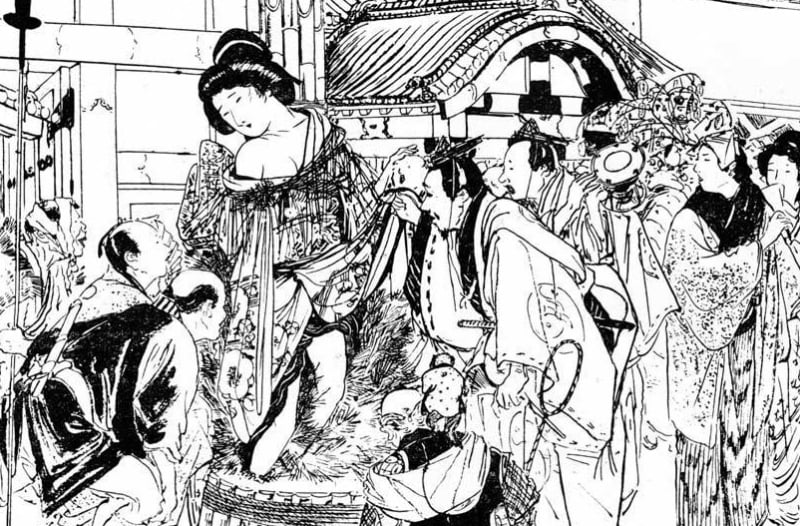
Fig.11a.
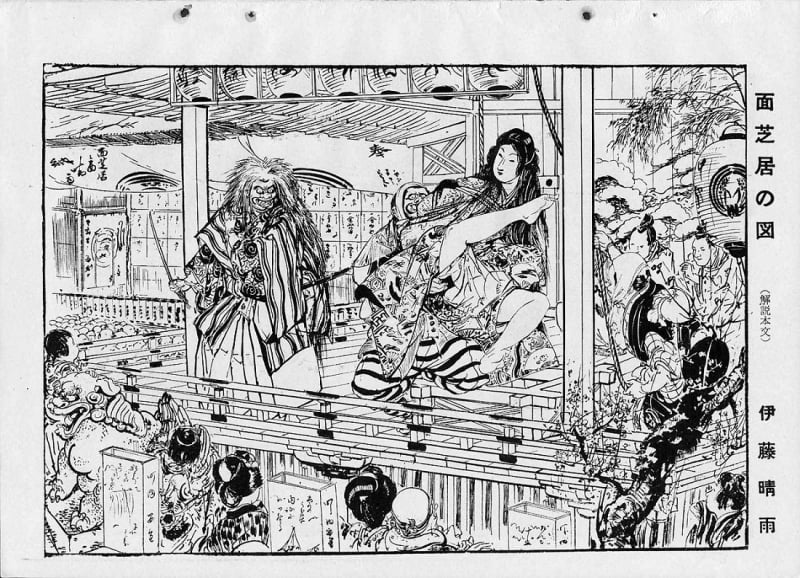
Fig.12.
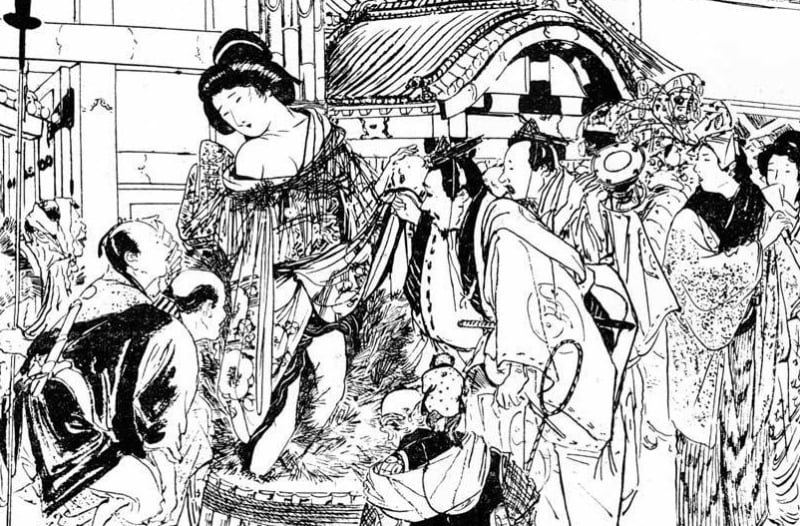
Fig.12a.
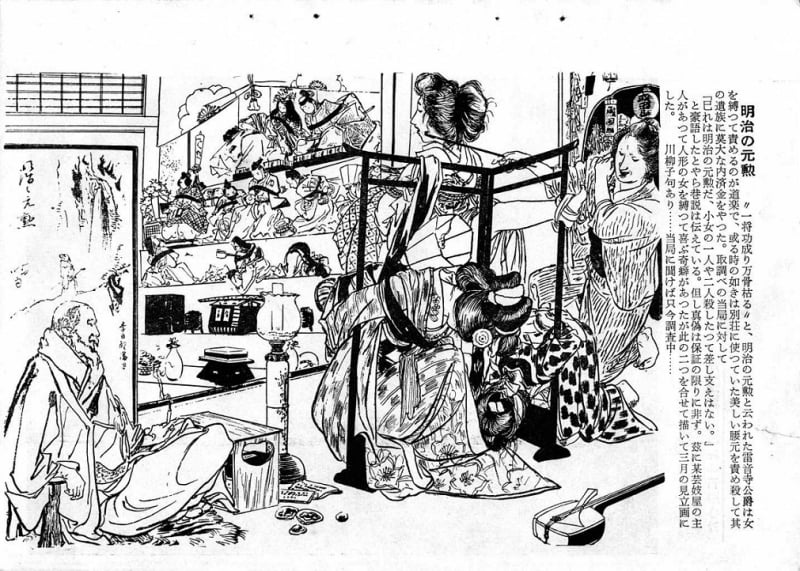
Fig.13.
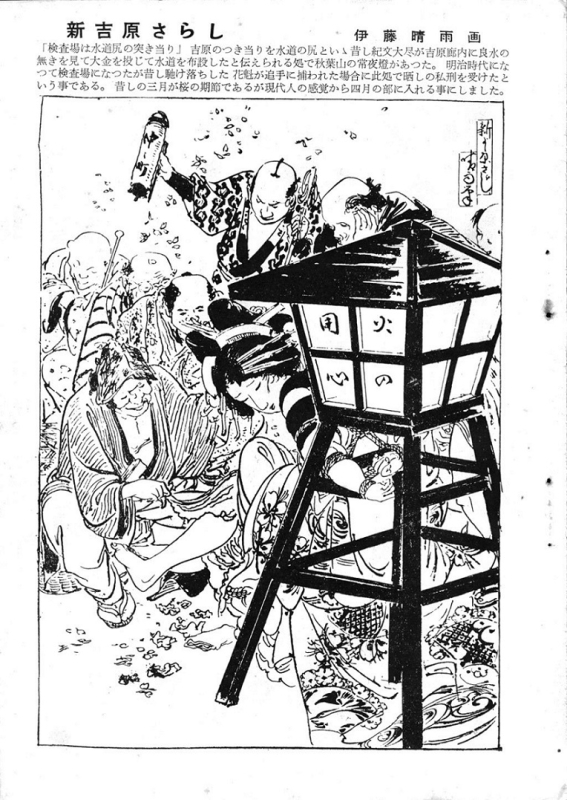
Fig.14.
In the extended Premium edition a biography on Ito Seiu, his introduction of kinbaku, his famous books and work for Kitan Club magazine and many additional pics.
Click HERE for part II or HERE for aesthetic ecstasy of the neck pose by Hokusai, Seiu and Klimt
